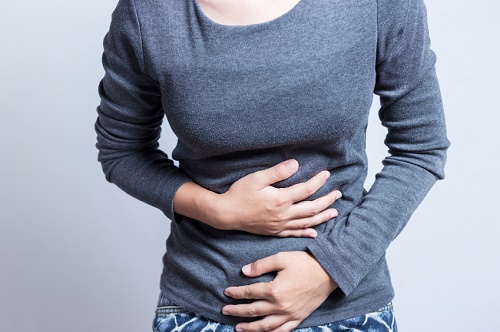 Bacterial infections are what can cause an inflammation of the bladder, also called cystitis. They can be painful and bothersome, especially when trying to urinate, and can become more serious if the infection spreads to your kidneys.
Bacterial infections are what can cause an inflammation of the bladder, also called cystitis. They can be painful and bothersome, especially when trying to urinate, and can become more serious if the infection spreads to your kidneys.
Cystitis can also occur because of other things like certain drugs, radiation therapy, or irritation due to feminine hygiene products, but these are far less common. Other illnesses can also be a catalyst for the inflammation of the bladder wall.
Antibiotics are the usual course of treatment for bacterial cystitis. Bladder control, surgery, dietary changes, and natural treatments for an inflamed bladder are all considered when determining the right course of action.
Causes of Inflammation of the Bladder
What causes inflammation of the bladder? The urinary system of the body includes the kidneys, ureters, urethra, and bladder, all of which play a role in removing waste from the body. The bladder is a hollow organ situated in the lower abdomen that stores urine; it expands when it is being filled, and contracts when urine is being passed. The walls of this sac-like organ become inflamed when an infection kicks in. Three common types of bladder pain and causes of bladder irritation are bacterial cystitis, noninfectious cystitis, and interstitial cystitis.
Causes of Bacterial Cystitis
Bacterial cystitis is what is commonly known as a urinary tract infection (UTI) and is caused by the Escherichia coli bacteria. Ask anyone who has had one and you will quickly discover that these infections are not fun at all. Some of the symptoms include:
- A strong need to urinate that does not go away;
- A stinging sensation when you urinate;
- Smaller amounts of urine than normal, most often because of the pain and your body refusing to release more;
- Pelvic pain;
- Blood in the urine;
- Pressure in the lower abdomen; and
- A low-grade fever (around 100.4 degrees Fahrenheit).
A UTI is more common in women than men because their urethras are shorter and closer to the anus, which increases the risk of bacterial transmission. A UTI usually appears in women after sexual intercourse or when a diaphragm is used. Menopause has also been known to increase the incidence of bladder inflammation. Wearing cotton underwear, emptying the bladder as soon as possible after sex, and practicing good hygiene can help limit the chances of getting a UTI.
Causes of Noninfectious Cystitis
Noninfectious cystitis is also more common in women than men. A number of factors that can cause it are bubble baths, feminine hygiene sprays, feminine hygiene products (tampons and pads), and spermicidal jellies. This doesn’t mean that everyone will get this form of cystitis; it just means that these certain factors make the condition more likely. Family history is also a factor to take into consideration. The symptoms of noninfectious cystitis are much the same as bacterial cystitis:
- Pressure in the lower pelvis;
- Pain during urination;
- A need to urinate often;
- A need to urinate at night;
- Blood in the urine;
- Pain during intercourse;
- Penile pain; and
- Fatigue.
Common Causes of Inflammation of the Bladder
Inflammation of the bladder, also known as interstitial cystitis, has no known cause but it is believed to be a real problem of its own and not just a result, symptom, or sign of another illness or health issue. The symptoms are so varied that doctors believe it is a spectrum of disorders rather than just one, and it has been given the umbrella term painful bladder syndrome (PBS) to cover what isn’t caused by an infection, stones, or other unknown factors.
One theory about what might cause PBS is a breakdown in the lining of the bladder, allowing toxins to enter and cause irritation, inflammation, and a decrease in the ability to hold in urine. There is no cure and diagnosis is very difficult. Changes to diet can help the situation some, as can bladder retraining and transcutaneous electrical nerve stimulation (TENS). TENS sends mild electrical impulses to the bladder through the skin to stimulate the nerves, which increases blood flow and can relieve pain.
Any of these three bladder infections need medical attention to make sure there isn’t something more serious involved. If antibiotics are given, relief should be felt within five days, but as always continue with the prescription until done, otherwise you risk having the infection come back, and it could be stronger.
Remember, bacterial infections can cause inflammation of the bladder. Antibiotics are the usual course of treatment, but bladder control, surgery, and dietary changes should also be considered when determining the right course of action. Speak with you doctor first before embarking on a course of action.
Sources for Today’s Articles:
“Conditions Treated: Interstitial Cystitis/Painful Bladder Syndrome, UCLA,” UCLA web site; http://urology.ucla.edu/body.cfm?id=478&ref=29&action=detail, last accessed March 11, 2016.
“Cystitis,” Mayo Clinic web site; http://www.mayoclinic.org/diseases-conditions/cystitis/basics/definition/con-20024076, last accessed March 11, 2016.
“Bladder Pain,” WebMD web site; http://www.webmd.com/pain-management/bladder-pain, last accessed March 11, 2016.
“Cystitis – Acute,” Medline Plus web site; https://www.nlm.nih.gov/medlineplus/ency/article/000526.htm, last accessed March 11, 2016.
“Bacterial Cystitis,” The Cystitis and Overactive Bladder Foundation web site; http://www.cobfoundation.org/bladder-conditions/cystitis/bacterial-cystitis, last accessed March 11, 2016.
“Cystitis: Causes, Symptoms and Treatments,” Medical News Today web site; http://www.medicalnewstoday.com/articles/152997.php, last accessed March 11, 2016.
“Cystitis: Non-infectious,” The New York Times web site; http://www.nytimes.com/health/guides/disease/cystitis-noninfectious/overview.html, last accessed March 11, 2016.
“Non-Infectious Cystitis,” DoveMed web site; http://www.dovemed.com/diseases-conditions/non-infectious-cystitis/, last accessed March 11, 2016.
“What Is the Cause of Interstitial Cystitis?” MedicineNet web site; http://www.medicinenet.com/interstitial_cystitis/page3.htm#what_is_the_cause_of_interstitial_cystitis, last accessed March 11, 2016.
